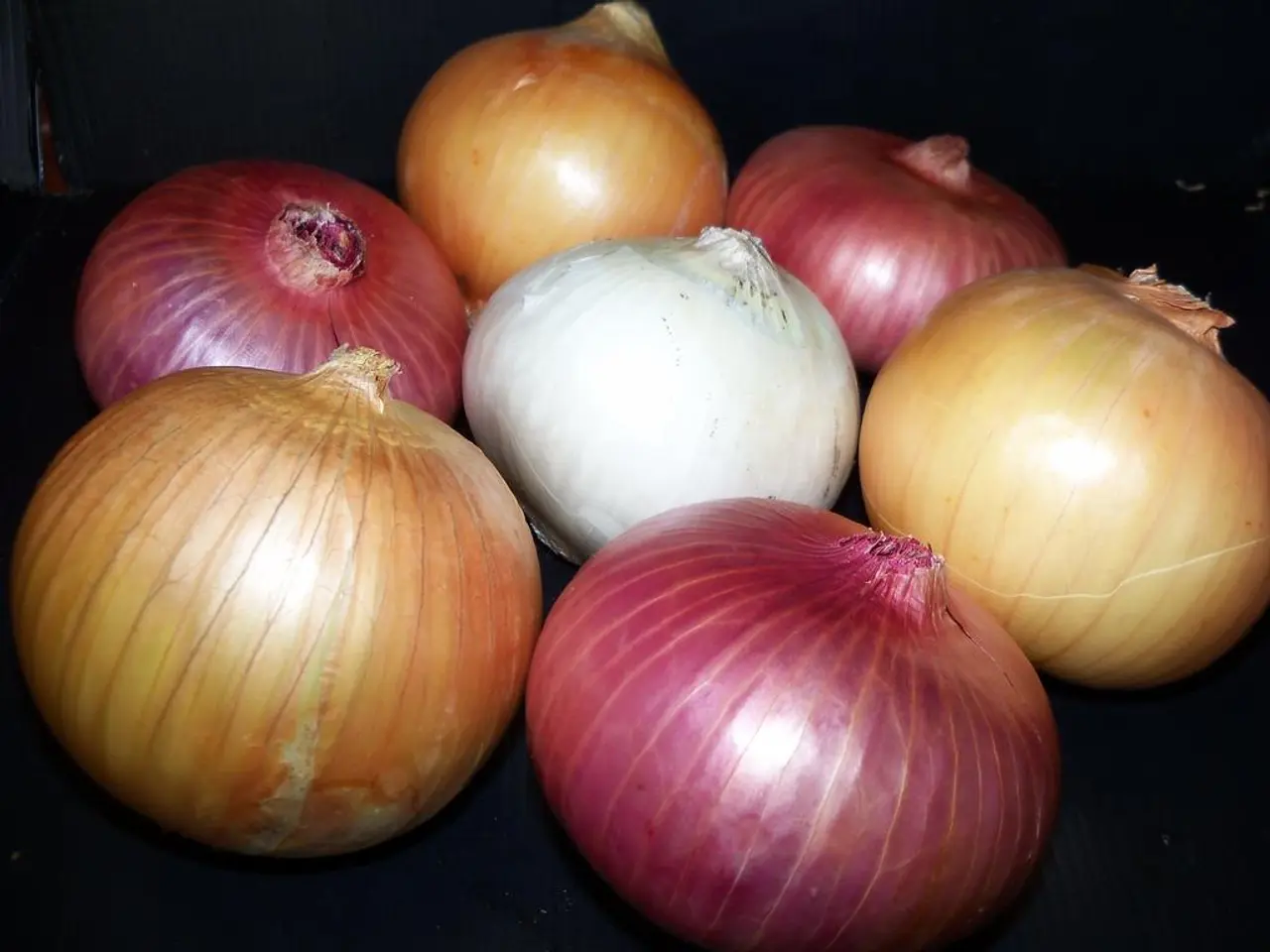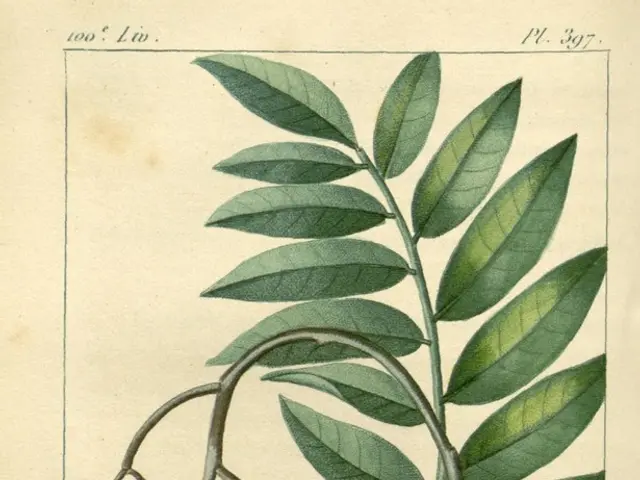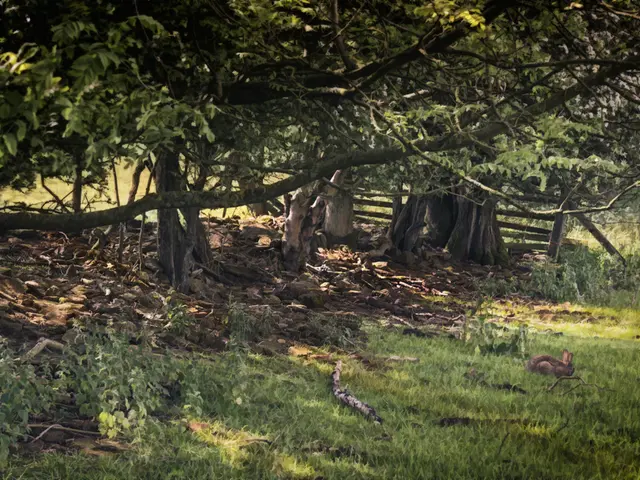Guide for Cultivating Garlic: Steps on Sowing, Nurturing, and Harvesting Garlic Bulbs
Growing Garlic: A Down-to-Earth Guide
Let's dive into the gritty details of growing your very own garlic! This humble veggie isn't just a crucial kitchen staple; it's a resilient and rewarding crop for gardeners of all skill levels. So, grab your gardening gear, and let's get growing!
Picking Your Garlic Variety
When it comes to growing garlic, there are two main types in focus: hardneck and softneck. Understanding their differences will help you choose the best fit for your climate and preferences.
Elephant garlic may sound like it's related, but it's not. In fact, it's actually a type of leek, not garlic.
Hardneck Garlic
This variety thrives in colder climates with harsh winters, like in USDA zones 0-6. Hardneck kinds are sturdier than softneck and require a prolonged exposure to cold weather, also known as vernalization, to grow. They yield larger cloves and offer a stronger, more aromatic flavor than their softneck counterparts[1].
Additionally, hardneck garlic scapes, the flowering stems, are edible and can add a peppery kick to your dishes[1][5].
Softneck Garlic
Softneck garlic is what you'll typically find in grocery stores. This type prefers milder climates with moderate winters, like zones 8-12. Although it can be grown in cooler climates, it does best in warmer regions[1].
Softneck garlic comes with a larger bulb containing more numerous, smaller cloves. While the individual cloves can be somewhat tricky to peel, they store incredibly well for up to 9 months due to the compact layering of their outer skins[1].
Sourcing Your Seeds
Garlic seeds are actually individual cloves. Each clove will develop into a full garlic bulb. To stock up on 'seeds', consider these popular sources, and keep in mind that you should order early in the late summer months, as they tend to sell out quickly:
- Bakers Creek
- Seed Savers Exchange
- Keene Garlic
And, if you want to save your very own 'seeds' for next year, you can do so by setting aside your best bulbs.
Let's Get Planting!
When to Plant
Garlic has a lengthy growing season and should typically be planted in the fall, between late September and late November, giving it approximately a month to root before the ground freezes[3]. Climate plays a significant role, so it's essential to follow the planting timing recommended for your region to ensure the best possible harvest.
Preparing Your Planting Space
- Prepare your soil by loosening it to a depth of about 12 inches, blending in organic compost like leaf mold or aged manure to foster loose, well-draining, and nutrient-rich soil.
- Your planting spot should provide full sun exposure and ensure good drainage to prevent root rot and support your garlic crop's growth.
Planting Techniques
Count the number of cloves you'll be planting, making sure you have enough space. One point of hardneck garlic will typically yield approximately 70 cloves, equating to a 4 by 4 foot bed[4].
Create 12-inch-wide rows, and space each garlic clove 4-6 inches apart to allow ample room for them to grow. Insert each clove, pointy end up, flat, and root ends down, about 2-3 inches deep into the soil. Gently cover them with soil, and don't compact the earth around the cloves.
Tending to Your Garlic Field
Mulching
In cooler climates, heavily mulch your garlic bed using at least a 6-inch layer of loose mulch, such as leaves, hay, straw, or hardwood mulch. If you live in a particularly wet or mild area, however, keep mulching levels lighter to prevent rotting[4].
If you notice garlic sprout before winter has passed, add more mulch to cover them, protecting those delicate sprouts from cold weather[5].
Watering and Fertilizing
During the growing season, water your garlic deeply but infrequently, allowing the soil surface to dry out about one inch between waterings. If you experience winter precipitation, whether rain or snow, you can skip watering until warmer weather arrives[4].
Fertilize your garlic crop in the spring by adding another layer of compost or using a slow-release fertilizer[4].
Weed Control
Keep weeds at bay by covering the top of the garlic bed with a layer of mulch to act as a natural weed barrier[5].
Harvesting Your Garlic Bounty
When to Harvest
Harvest time for garlic typically arrives in mid-summer. As the leaves begin to turn yellow, shrivel, and start drying up, it's time to harvest. If you're growing softneck garlic, the leaves will fall over, much like onions, while hardneck varieties won't flop[4].
How to Harvest
First, stop watering for one to two weeks before harvesting to make the lifting process easier and the drying process quicker and less labor-intensive.
Carefully loosen the soil around the bulbs using a small trowel, taking care not to damage the bulbs during the process. Avoid pulling too hard on the greens as well.
Once harvested, don't wash the garlic, but brush off excess mud and dirt immediately and clip the roots at the end.
Curing and Storing Garlic
Allow your freshly harvested garlic to cure for two weeks in a well-ventilated area out of direct sunlight. Remove the soil as it begins to dry up.
After curing, trim the leaves and roots by cutting them off at the end of the bulb, and store the bulbs in a cool, dry, and dark place. Regularly inspect your garlic and use any that begin to sprout or soften quickly.
And that's it! With just a little bit of effort, you'll have a thriving garlic patch yielding delicious, aromatic garlic far superior to store-bought varieties!
Remember, growing garlic is your way to reconnect with the earth, establish a self-sufficient lifestyle, and enjoy the satisfaction that comes from nurturing your own food source.
Join the conversation with other like-minded enthusiasts in the Self-Sufficient Life Facebook group for even more tips, tricks, and friendly support!
Sources:[1] Cornell University, 2021. Extension Proceedings — Vegetable Productionhttps://ag.umass.edu/resources/extension-proceedings—vegetable-production/[2] National Climatic Data Center, 2021. Garden Climate Zone Maphttps://www.ncdc.noaa.gov/stormevents/maps/GardenClimateVisRaster_PolygonList_maps.html[3] University of Kentucky, 2021. Planting Garlic in Autumnhttps://www.ca.uky.edu/agc/pubs/forage/fy770/fy770.pdf[4] The Spruce, 2020. How to Plant Garlic: 12 Easy Steps for Fall Plantinghttps://www.thespruceeats.com/how-to-plant-garlic-2002961[5] University of Illinois, 2021. Garlic Scapes: How to Harvest, Store, Prepare, and Cookhttps://extension.illinois.edu/growing/garlic-scapes/
Incorporating garlic into your home-and-garden lifestyle can bring a unique addition to your garden and a flavorful enhancement to your lifestyle. Nurturing a garlic bed can be a part of your gardening hobby, yielding aromatic bulbs that are far superior to store-bought varieties.
Depending on your climate, opt for either hardneck or softneck garlic varieties. Hardneck garlic, which thrives in colder climates, yields larger cloves with a more intense flavor and edible scapes, while softneck, appealing to gardeners in warmer regions, offers numerous smaller cloves with excellent storage capacity.








